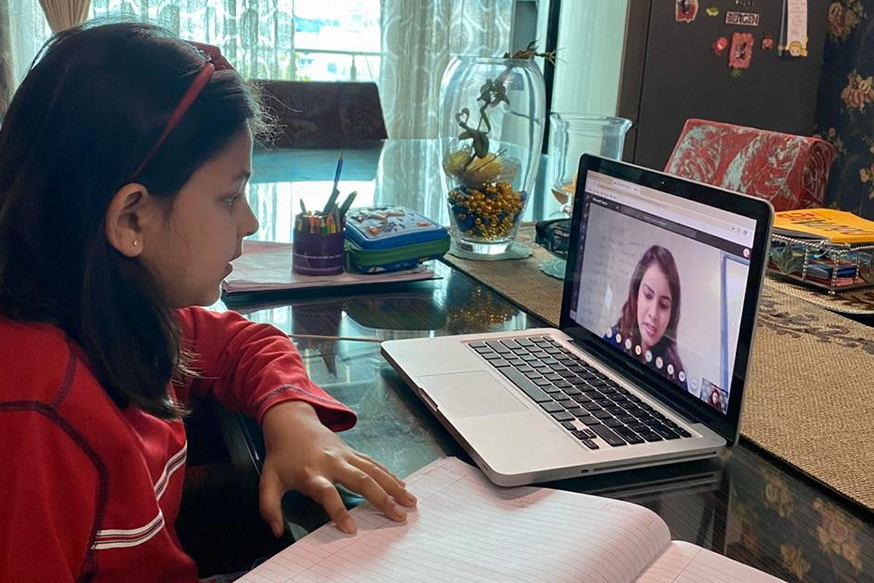The Gloomy State of E-Learning in India

Brief Summary: This article explains in depth the present scenario of e-learning in India. It points out the reasons why online education has not been an all-round success in the country.
Introduction
One of the tenets laid down in the Indian constitution is, all citizens should have equal access to every opportunity. Unfortunately, that is not true in most sectors of India. Online education is no exception.
The Blow of a Pandemic
The Indian education system is not the most efficient or systematic. Covid-19 has dealt an already staggering institution a heavy blow. It has laid bare the fault lines especially in the online education system.
When all educational institutions had to be shut down to check the spread of Covid-19, teaching and learning were shifted online. To facilitate this large scale endeavour, several guidelines were issued by the National Council of Educational Research and Training (NCERT) and the Central Board of Secondary Education (CBSE).
There is no shortage of online learning opportunities in India. There are many learning schemes, teaching videos and websites that offer online education. Most of the government sites have content based on the Alternative Academic Calendar issued by the NCERT. These sites have teaching videos, digital editions of textbooks and links to educational content.
The Three Problems
However, the process of online education in India is hardly faultless. There are three basic problems which need to be addressed urgently. These are:
- Widespread inequality
- Incompetent teaching which in turn creates bad education
- Unjustified dependence on online education in post-pandemic times
Inequality
The underprivileged always bear the brunt of any calamity, natural or man-made. It is no surprise that the vast underprivileged population of India have also been hit the hardest by Covid-19. More specifically, by the unwarranted thrust on online education. So deep is this malaise that it stands to affect future generations as well.
Put simply, the underprivileged have limited or no access to online education. Such a form of learning is dependant on technology (desktops, laptops, smartphones), which is largely unavailable to the poorer class. Many families can not afford the cheapest smartphones, let alone a computer.
And then there is the problem of online access. The underprivileged cannot continuously afford a data plan and even if they can, there is a big possibility that their entire village/district has no access to the internet.
The Indian government addressed this issue rather late, at the end of August 2020. Their plans were also unrealistic, because they thrust the onus of teaching on the semi-literate or illiterate parents of underprivileged children. Community involvement or mobile pool plans were equally removed from reality.
What it boiled down to was, only students with online access can avail of digital education. This is set to skip the scales more in favour of the privileged, while lending the underprivileged at an even bigger disadvantage.
Poor Teaching
Most government schools in India are under-staffed. The quality of teachers also leave much to be desired. Moving the entire set-up online has only transferred the problem, not solved it.
The chasm created by technology is also to blame. Listening to a lecture on a phone cannot be as effective as being in a physical classroom. It almost guarantees a loss of focus. Add to that patchy internet connectivity, blurred audio and video, and students stand to lose even more.
The teaching videos have below-par content. The science and mathematics videos in particular lead to questions. They focus less on explaining the concept of a particular theory, and more on exam-based mugging up. Knowledge earned in this way has little retention value. This mode of teaching is especially harmful for beginners, because they are laying the very foundation of their education on faulty ground.
The Thrust
For all the bombastic talk of digital education being the future, India has a long way to go to catch up. What works for a developed, well-performing system cannot always be beneficial for a poorly performing system. It will be foolish to assume that digital education will transform the country’s education system.
An unnecessary reliance on digital education can instead have alarming effects on basic education, especially for the underprivileged. It will make education less accessible and affordable, forcing many to drop out of the system altogether.
Environment Matters
It must also be remembered that most underprivileged students cannot afford a quiet environment at home, which is conducive to learning. Most such families live cheek to jowl and the children are easily distracted.
A classroom instills a sense of discipline in students, almost without their knowing. Apart from learning, going to school also offers them an opportunity to communicate with peers and socialize. It gives students a sense of purpose, a sense that what they are doing is important.
Online education can never replicate the environment of a classroom. It also has to work harder to create a sense of purpose and meaning, especially for young learners.
Conclusion
The public education system in India has been diseased for a long time. Digital education has only thrown the flaws in greater relief. These issues need urgent attention for the situation to improve.









